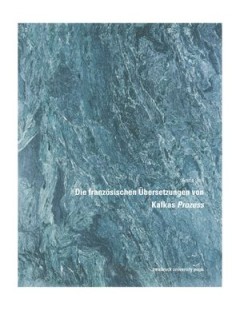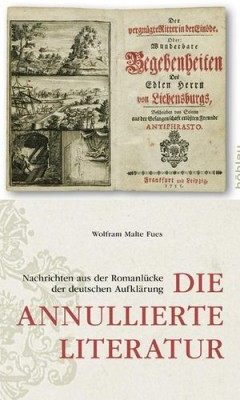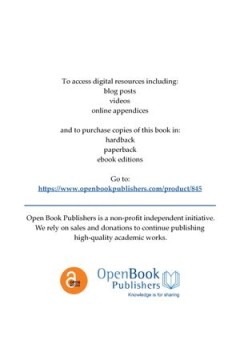Filter by

Digital Papyrology II
The ongoing digitisation of the literary papyri (and related technical texts like the medical papyri) is leading to new thoughts on the concept and shape of the "digital critical edition" of ancient documents. First of all, there is the need of representing any textual and paratextual feature as much as possible, and of encoding them in a semantic markup that is very different from a traditiona…
- Edition
- -
- ISBN/ISSN
- 9783110547450
- Collation
- -
- Series Title
- -
- Call Number
- 930

Die französischen Übersetzungen von Kafkas Prozess
The siting of the novel The process in the French book trade is not without a certain Kafkaesque note: To date, five different versions of Kafka's perhaps most famous work are available in French. Kafka in France - the translations and the subsequent interpretations provide the reader not only a range of intellectual currents in France, but enable him to look at Kafka's works under the most var…
- Edition
- -
- ISBN/ISSN
- 9783902811011
- Collation
- -
- Series Title
- -
- Call Number
- 936

Die annullierte Literatur Nachrichten aus der Romanlücke der deutschen Aufk…
Arbeitsfeld der Untersuchung ist die in der Literaturwissenschaft immer wieder statuierte oder stillschweigend akzeptierte ‚Romanlücke‘ in der deutschen Literatur des 18. Jahrhunderts, etwa vom Ende des Barockromans bis zum Erscheinen von Wielands „Agathon“ dauernd, von wenigen Ausnahmen wie Schnabel und Gellert noch akzentuiert. Nach einem eingehenden geschichts-, sozial- und kulturph…
- Edition
- -
- ISBN/ISSN
- 9783412507381
- Collation
- -
- Series Title
- -
- Call Number
- 930

Cicero, Philippic 2, 44–50, 78–92, 100–119
"Cicero composed his incendiary Philippics only a few months after Rome was rocked by the brutal assassination of Julius Caesar. In the tumultuous aftermath of Caesar’s death, Cicero and Mark Antony found themselves on opposing sides of an increasingly bitter and dangerous battle for control. Philippic 2 was a weapon in that war. Conceived as Cicero’s response to a verbal attack from Antony…
- Edition
- -
- ISBN/ISSN
- 9781783745913
- Collation
- -
- Series Title
- -
- Call Number
- 930
 Computer Science, Information & General Works
Computer Science, Information & General Works  Philosophy & Psychology
Philosophy & Psychology  Religion
Religion  Social Sciences
Social Sciences  Language
Language  Pure Science
Pure Science  Applied Sciences
Applied Sciences  Art & Recreation
Art & Recreation  Literature
Literature  History & Geography
History & Geography